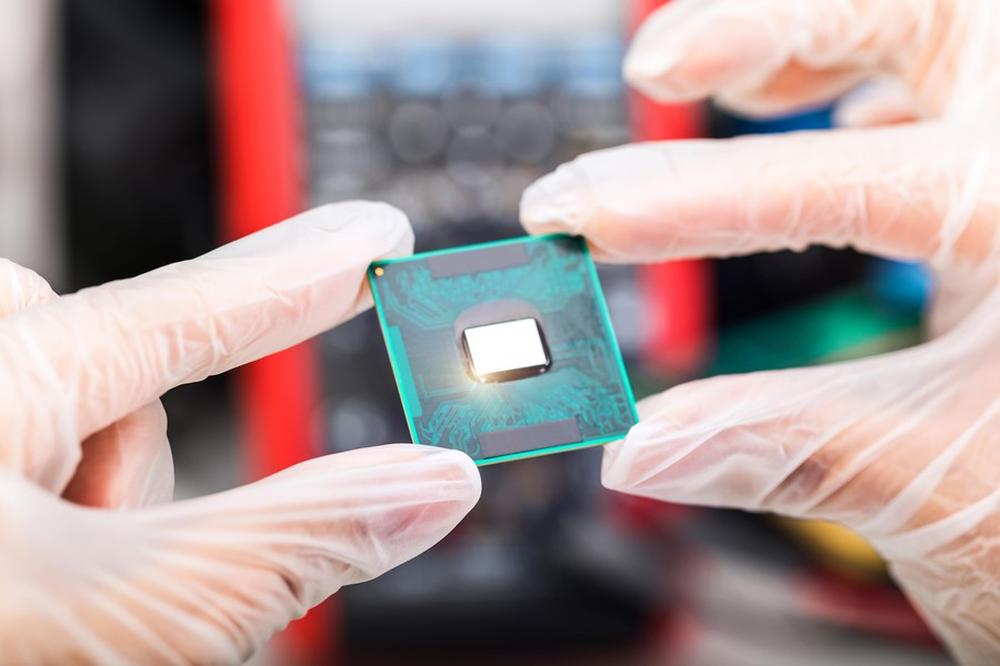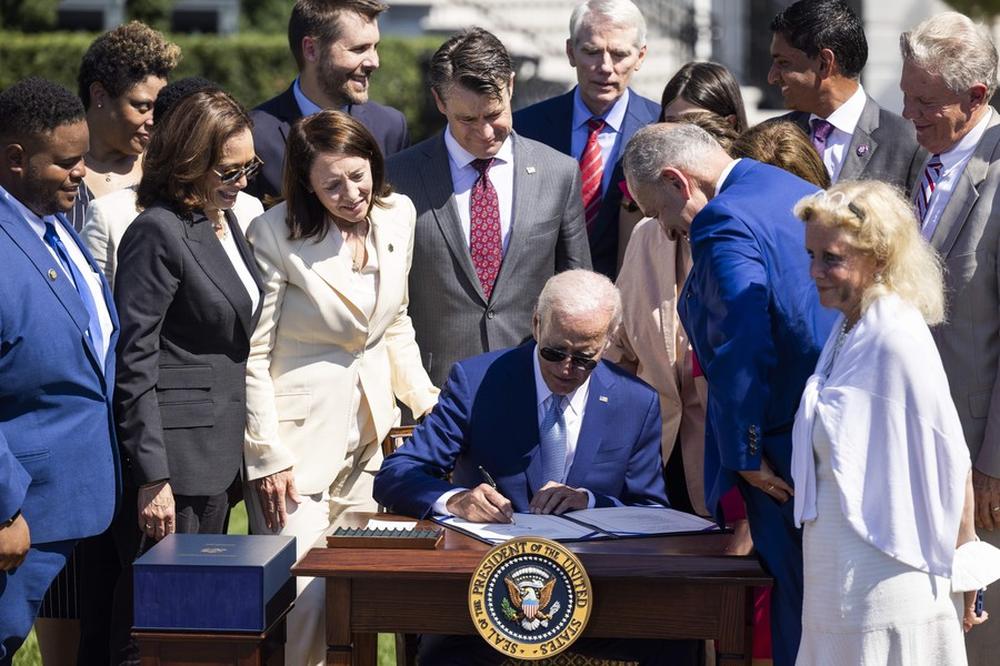- #China
- #Economy & Trade
- #South Korea
- #US Foreign Policy

► Discussions have been ongoing over whether South Korea would participate in the US-led East Asian semiconductor supply chain network, “Chip 4” (also known as “Fab 4”). So far, most of these discussions argue that Korea's participation in Chip 4 is inevitable, given the Korea-U.S. alliance and the U.S. status in the semiconductor industry.
►However, considering that China, Korea's largest importer of semiconductors, is warning against Korea's participation in Chip 4, some have argued that this network should not pursue an explicitly anti-China direction, and Korea-China cooperation should continue to be pursued carefully.
Discussions have been ongoing over whether South Korea would participate in the US-led East Asian semiconductor supply chain network, “Chip 4” (also known as “Fab 4”). So far, most of these discussions argue that Korea's participation in Chip 4 is inevitable, given the Korea-U.S. alliance and the U.S.' status in the semiconductor industry. However, considering that China, Korea's largest importer of semiconductors, is warning against Korea's participation in Chip 4, some have argued that this network should not pursue an explicitly anti-China direction, and Korea-China cooperation should continue to be pursued carefully. Is it really possible for Korean companies to build state-of-the-art semiconductor fabs in the US and actively participate in the US-led reorganization of the semiconductor supply chain, while simultaneously maintaining production facilities in China and continuing to export semiconductors there?
Referring to the reports of the White House and the Department of Commerce released so far, it seems that the primary purpose of Chip 4 is to ensure the safety of the semiconductor supply chain through cooperation with Korea, Taiwan, and Japan, and more specifically, to secure advanced semiconductor fabs in the United States. The worst-case scenario for the U.S. in the semiconductor sector is that China quickly outpaces Taiwan and Korea in fabrication technology, so U.S. fabless companies have to entrust their business to Chinese companies. Therefore, the U.S. feels most threatened by the lack of advanced semiconductor fabrication technology domestically and the rapid development of this technology in China. Among the many measures the US has implemented to contain China's rise in the semiconductor sector, the restrictions on trade with China for ASML of the Netherlands and TSMC of Taiwan were the most consequential. The Netherlands is not included in Chip 4. Although the formation of Chip 4 itself could be recognized as a check against China, it remains to be seen whether additional measures targeting China will be made within the network. While Chip 4 seeks to secure manufacturing facilities in the US and contain China at the same time, for now, the former seems to be the clearer and more important goal for the U.S.
Semiconductors have overtaken crude oil to become China’s number one import product, and since 2014, the government's massive investment in semiconductors has pushed the industry forward. China’s goal is to continuously upgrade semiconductor fabrication technology and increase the self-sufficiency rate of semiconductors. Where does China feel most threatened in the semiconductor sector? For sure, the threat comes from the supply interruption of state-of-the-art equipment and chips for domestic companies (and foreign companies operating in China), and the root cause of this threat is the US government. China sees that Chip 4 intends to exclude China from the semiconductor supply chain, and thus it has consistently warned South Korea about its participation. Currently, Samsung produces 40% of NAND in China and SK Hynix also produces about half of its DRAM chips in China, and China accounts for 60% of Korea's semiconductor export market. Some are concerned that Korean companies might experience difficulties in the production of semiconductors in China and the export to China, as they expect retaliation after joining Chip 4. However, this card might not be easy to use, as it could cause a major setback in Chinese semiconductor growth.
Recently, as China's technological pursuits have progressed faster than expected, as seen in a report that the Chinese company SMIC became capable of producing 7-nanometer chips, the US government is considering expanding the scope of sanctions against Beijing.
The CHIPS and Science Act, passed by the U.S. Congress, stipulates that new or additional investment in China be prohibited for the next 10 years for companies seeking to receive the US government subsidy under the law. If these measures are implemented, there will be setbacks in upgrading fabs in China operated by Korean companies, and thereafter, the proportion of Samsung and SK Hynix investments in China could inevitably be adjusted downward. Korean companies' operation of semiconductor fabs in China is sensitively affected by the U.S. government's export control and investment restriction policies. When Korea participates in Chip 4, it is necessary to make efforts to protect the interests of Korean companies related to China.
It is neither possible nor desirable for the U.S. to fully decouple from China in the semiconductor sector. South Korea must be clear that it will continue to cooperate with China outside the scope of U.S. sanctions. Among the Chip 4 participating countries, China sees Korea as its main target, more so than Taiwan and Japan, as Korea is perceived as the weakest link in Chip 4. Through the steady development of Korea-U.S. semiconductor cooperation, Korea must show that it is not a weak link in Chip 4 and, at the same time, illustrate convincingly that there is room to develop a beneficial relationship with China.
When participating in the Chip 4 network, Korean companies and governments should be concerned about their relationship with the United States and the future of the semiconductor industry in Korea, just as much as their relationship with China. Currently, Korean companies are investing heavily in the advanced semiconductor processing sector in the U.S. However, until Korean companies could establish a stable position in the U.S. market and compete with Intel and TSMC, there are expected barriers in terms of manpower, production cost, and U.S. government policy. Continuous support and attention from the US government are required for Korean firms’ investment in the U.S to overcome these issues. In addition, when the driving force of investments in Korea becomes weak due to massive investment in the U.S., there are concerns about whether Korea would continue to remain at the center of the cutting-edge semiconductor manufacturing technology. If the U.S. emerges as the new nexus of the semiconductor manufacturing as planned, South Korean companies should consider on where they could have competitiveness in semiconductor supply chain and what strategy they would pursue.
Semiconductor technology began to develop after the late 1940s, and the U.S. led the industry until the 1970s. In the late 1980s, one of the major causes of the Japanese semiconductor industry’s decline was U.S. policy toward Japan, specifically the U.S.-Japan Semiconductor Agreement. Korea's Samsung and Taiwan's TSMC were able to enter the field and develop the semiconductor industry under the U.S.-led industry and security umbrella. Currently, the semiconductor industry is undergoing a major reorganization due to the U.S.-China semiconductor conflict. U.S. sanctions and containment against China might be advantageous for Korean companies in the short term. However, in the long term, not only China but also the United States and Europe are making huge investments in the semiconductor manufacturing sector, which poses a significant challenge to the future of the Korean semiconductor industry. If Korea does not continue to upgrade its technology capabilities in advanced semiconductor manufacturing, it will be forced into a situation of neglect and exclusion both by the U.S. and China, rather than a dilemma of having to choose one of them. What is the biggest challenge to Korea's advanced semiconductor technology? Of course, the challenge of China's increasing capabilities is present, but in the future, the challenge of the US could be also formidable. In order for Korean companies’ investment in semiconductor manufacturing in the US and participation in Chip 4 to lead to a positive feedback cycle for the further development of the Korean semiconductor industry, Korean firms and government should continuously negotiate with the U.S. government and strive to secure the interests of Korean companies. In the midst of the U.S.-China semiconductor conflict and changes in the semiconductor supply chain, Korean companies and government must think about how to structure their investment portfolios in the U.S., China, and Korea, and at the same time, implement finely tuned and detailed strategies to maintain their superiority in advanced semiconductor manufacturing technology.
YoungJa Bae is a Professor in the Department of Political Science and Diplomacy at Konkuk University. Dr. Bae received her BA and MA at Seoul National University and her Ph.D. in political science at the University of North Carolina at Chapel Hill in the United States. She has been serving on the policy advisory committee of the South Korean Ministry of Foreign Affairs, the policy advisory committee to the Office of National Security at the Blue House, the vice chairman of the Korean Association of International Studies, and the vice chairman of the Korean Political Science Association. She was a visiting scholar at National Taiwan University under Taiwan Fellowship. Her main research interests include international politics and S&T, science diplomacy, and international political economy. Her major publications include "US-China competition and Science and Technology Innovation," "S&T Diplomacy as Public Diplomacy," and "Regulations on Foreign Direct Investment and National Security."

